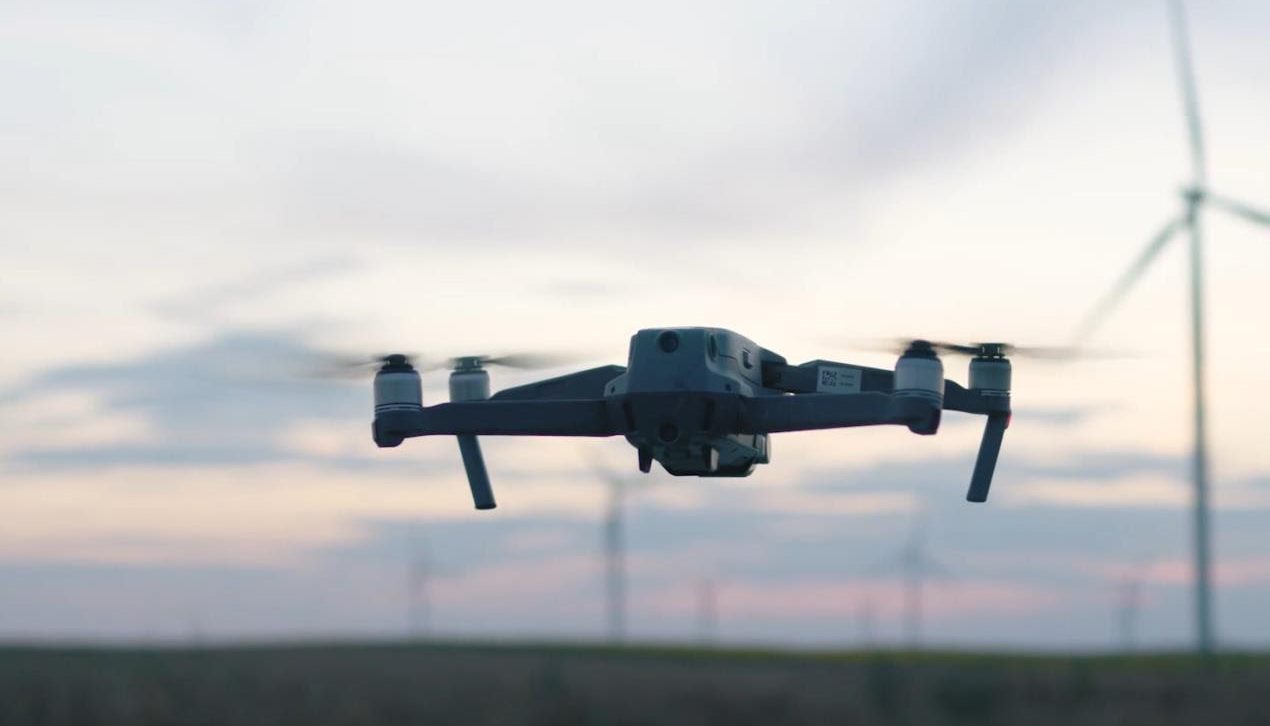Drone technology combined with active thermography offers faster, cheaper and more in-depth inspection of wind turbine blades and aeroplane wings Two Cambridge-based companies, Innvotek and Mapair, have successfully trialled a drone system that uses infrared technologies and artificial intelligence to inspect composite structures, including wind turbines and aircraft wings, for defects.
Firefly Inspect can hover above wind turbine blades and aircraft using a 1,000W heat lamp to test for defects – the first time that such a powerful heat source has been fitted to a drone.
Firefly Inspect was originally a concept for inspecting aeroplane wings when they are stationary within hangars. Thanks to a collaboration with the Offshore Renewable Energy (ORE) Catapult, the technology has now been adapted to include inspection of on- and offshore wind turbines.
During recent trials at ORE Catapult’s National Renewable Energy Centre in Blyth (UK), the drones demonstrated their ability to hover autonomously and manoeuvre close to vertically suspended wind turbine blades. The active thermography module enabled capture of variations in surface temperatures of blades when heated, revealing hidden imperfections that are not visible on the surface.
Aircraft wings and turbine blades are often made of lightweight composites that deliver exceptional strength, stiffness-to-density and flexibility. Exposure to extreme conditions can erode or cause pitting of these surfaces over time and regular inspections are required to prevent small faults becoming critical failures. Manual methods, where technicians scour structures for visible defects, are the status quo in both industries. However, robotics can offer a faster, more accurate and safer way of inspection.
Firefly Inspect’s ability to detect hidden structural defects and automatically locate their position using artificial intelligence will help operators make informed decisions to extend the service life of composite components. A further innovation is the use of OptiTrack motion capture technology for navigation, avoiding reliance upon GPS, which can be subject to signal interference out at sea. This also enables indoor inspections (inside aircraft hangars) where GPS does not work.
The technology’s development was joint funded by Innovate UK and Canada’s National Research Council with additional support from Cranfield University, Université Laval and Canadian company BI Expertise. The project (Multiple Robotic Inspection of Composite Aircraft Structures Using Active Thermography – MultiAcT) has been awarded the EUREKA label for outstanding R&D achievement.
“Robotic technologies offer a range of health and safety benefits while more regular and cost-effective inspections can reduce turbine downtime, but that is not the whole story,” comments Andrew Macdonald, Offshore Wind Development and Operations Director at ORE Catapult. “Offshore wind is set on a course of rapid expansion across the world. The sheer scale of operations, the supersizing of turbines and their deployment ever further from shore – all these factors make human-led inspections more fraught, risky and costly. UK developers like Innvotek are gaining the first-mover advantage in creating the robotic and digitalised solutions of the future.”
Michael Corsar, Chief Technology Officer for Innvotek added: “The success of the trials is a major milestone in our overall development program. We now look to make refinements to the system as we move towards commercialisation in the wind energy and aerospace sectors. There is huge potential to reduce costs, enhance safety and generate critical data that will benefit integrity management for asset owners in both these industries.”
“The use of drones for asset inspection is now normal; however, new inspection techniques together with increased autonomy is required to ensure operating costs remain low whilst gathering higher-value information to make better decisions,” added Alex Williamson, Director, Mapair.















